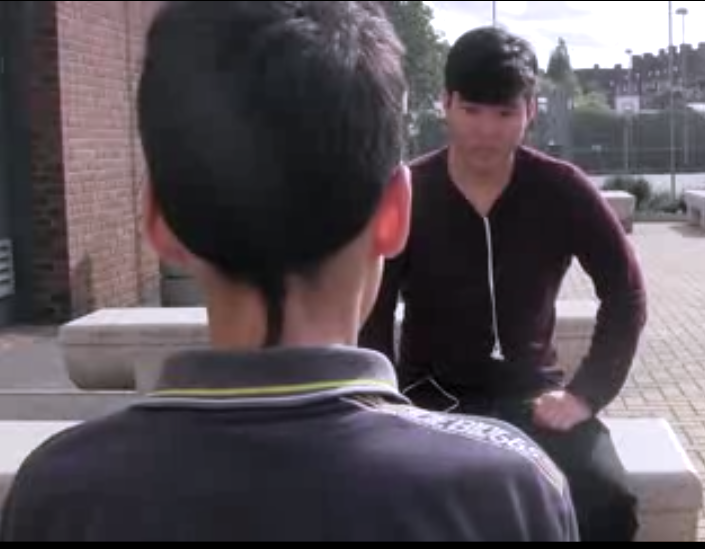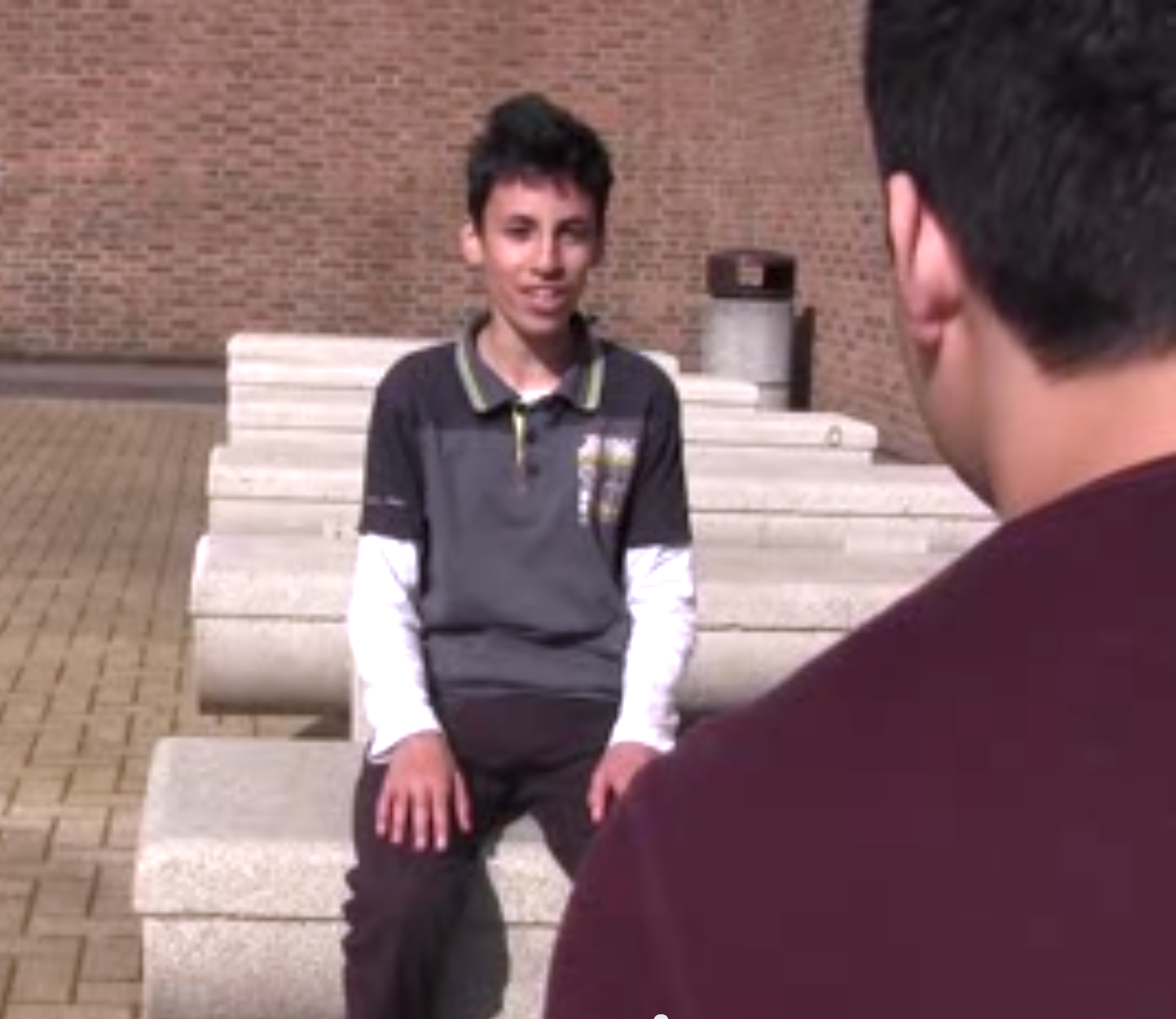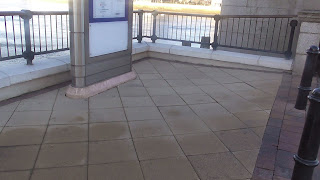Research and Planning:
Preliminary Task
Preliminary Task
Near the start of the year, I was given a brief scenario of a preliminary task that I was asked to complete. It was to film the production of "a character opens a door, crosses a room and sits down in a chair opposite another character, with whom she/he then exchanges a couple of lines of dialogue" The task also requires us, in a group of 3, to demonstrate knowledge and understanding of match on action, shot/reverse shot and the 180-degree rule. We researched these techniques and found examples of them, to further our understanding of them - so that I was able to make a short preliminary task that met the criteria asked of us. Our planning also including the making of storyboards, and a brief plan of what will happen in each shot we will take. By completing this, it would be able to enhance the overall quality of the preliminary task; we would know specifically what we wanted in all of the scenes we would film. The weakness of this planning was that sometimes, some of the scenes we planned on the story board wasn't filmed because we had to adjust/edit scenes that actually was worth putting in the final product of the preliminary task - meaning that we wasted valuable time on planning that wasn't needed.
Match on action: Is a very simple but essential tenchique, where the perspective of the camera changes during a scene and the scene continues to flow. An example of match on action in the preliminary task is during 00:07-00:09, where the positioning of the camera focusing on the character opening the door, changes from a medium shot inside the building to a long shot, outside the building. This technique, not only allowed the same scene to be viewed from different angles but it also flowed with the scenes that followed. However there was a weakness: there was a scene where the match on action didn't flow well at all. This was during the shot/reverse shot of the two people: Fabio and Tselmuun sitting down on the bench, from 00:46-00:49. The cut between the two scenes here doesn't flow well, as the person (Fabio) facing towards the camera suddenly "jumps" from where he is sitting in one scene, abruptly to the left. This was due to the error in the placement of positioning of the characters and even the camera too, which I have been able to learn from this mistake so that in the future the match on action will be better.
Shot/Reverse shot: Is a film technique where one character is shown looking at another character (often off-screen), and then the other character is shown looking back at the first character. We have used the shot reverse shot when the two characters are speaking in the preliminary task, at 00:42 and 00:45. By using a shot reverse shot, since the two people sitting down (Fabio and Tselmuun), facing each other are shown facing opposite directions, the audience of our preliminary task will be able to assume that they are facing each other - making it look more professional.


180 degree rule: A rule stating that a camera should be placed somewhere inside 180 degrees on a particular side of the invisible line of a shot containing two people filmed in sequence. This technique was used at the same time of the shot/reverse shot: , when the two people sittting on the benches are talking to each other. It is used here because if the camera in this situation crossed the invisible line, it gives the impression that the positions' of the two actors' in this scene has been reversed - showing the incompetence to follow the basic rules of professional filming.
Research and Planning:
Full product/Opening Sequence
So from the research and planning the preliminary task I have been able to along with my group to research and plan for the full product of the 2 minute opening sequence to a greater effect. For example before the planning done on the preliminary task was all done on paper, but now the research and planning was mostly, if not all done online or by technological means. Here, below are a few examples of how we planned our opening sequence, in order to think of ideas and scenarios to potentially include .We had to firstly research the history of British social realism movies and the themes/conventions that are usually found in them. This helped us get a general idea of what we can base our opening sequence on. In addition to that, I was fortunate to go to the BFI to see a lecture of creating an opening sequence, teaching us the "do's" and "don'ts" of creating an opening sequence. There was also a guest special appearance of Dexter Fletcher who directed Wild Bill. He told us the best things to do when given a very limited budget and that was the situation with us. One of the most important things he lectured us on about was to always start off the opening of the opening sequence with the protagonist, as this would be able to tell the target audience: "this is the main character".The weakness found during the research and planning of the opening sequence was how time consuming it was overall. This stemmed from the beginning of me and my group deciding of what the plot of our movie should be about. We first thought of an idea that included over 5 themes, however this was deemed as too much and would most definitely go over the 2 minute time limit given. We then slimmed the genres/themes down to: teenage pregnancy, alcoholism, depression and corruption of youth, all which are able to link with each other. In addition to that, the planning of the days we decided to go out to film certain scenes were hindered and affected by a couple of factors. These included: the weather changing on different days and the battery pack on the camera not working at times leading to a further post-pone of dates to re/film certain scenes.
Digital Technology:
Preliminary Task
The weakness that arose from the digital technology used was that the video camera we received had a bad battery pack, meaning that we had to continuously charge the video camera, more often than we would have liked. Consequently, this means that the time we spent waiting and eventually filming certain scenes took significantly long. Furthermore, the scene where we didn't apply the rule of thirds was during the scene where Tselmuun and Fabio was talking in the shot/reverse shot. There was too much wasted space on the left and this does not look professional and well at all. But from this we have learned to make sure the positioning of the the actors and camera has to be perfect. To add to this, I spent quite a lot of time getting used to Final Cut Pro because it was the first time I had used it. This also meant that time wasn't spent in the best possible way through Final Cut Pro too.
Digital Technology:
Full product/Opening Sequence
We used the same digital technology for the 2 minute opening sequence. However, since I had used the video camera and the features it contained in the preliminary task, I was able to apply the same options on the opening sequence but to a greater extent. Furthermore, since I have had more experience when filming the preliminary task, the filming of the opening sequence is more fluid and higher quality. This also applies to Final Cut Pro; I have a better understanding and knowledge of a variety of transitions and effects that can work well on our movie: Devil May Care. For example we have used a pitch black background on the opening credits with bold and huge white font. This will able to draw the target audiences' and appeal to them - meaning that this is an advantage for our overall opening sequence.
The weaknesses with the digital technology during the opening sequence was that, the video camera we were given to film the footage was really problematic. What I mean is that the video camera's battery pack didn't work, meaning that we had to wait for the school to order a completely new one. In the mean time, my group had to use our own personal camera, one of us had. As a result this meant that the quality the scenes at the start of the opening sequence wasn't as good as if we used the HD video camera the school provided us. Our group also had a few problems on Final Cut Pro because there was an incident where all of the footage was deleted, so we had to import everything and edit it again, which was really frustrating and time consuming.
Creativity:
Preliminary Task
For the preliminary task, creativity was rather limited as we had to follow the brief, which had asked us to just create a small piece of two characters walking through a door and having a conversation. This seemed really simple and easy for us to do, so me and my group decided to make it more creative and entertaining, whilst still matching the requirements asked of us by the brief. We decided that the preliminary task should include comedy inside it, so that it would be rather appealing and attractive to watch. We done this by having Tselmuun trip up whilst walking in the playground - allowing for a rather unique preliminary ask that differentiates from the rest. So overall me and my group have been able to incorporate a rather funny scene into the preliminary task.
The weakness of the creativity of our preliminary task is that the scene of the tripping of Tselmuun in the middle of the playground. I think that the tripping scene may not have been the best scene that could have been used in the preliminary task because it didn't have the best match on action. This meant that it didn't seem realistic when he tripped, leading to it not seeming professional and well done.
Creativity:
Full Product/Opening sequence
The creativity of our opening sequence/full product wasn't the best and original; our group believed that we should stick with the conventions/themes of British social realism movies, that would really impact and draw in our target audience. The main themes we have included are: violence, alcoholism and teenage pregnancy. We looked for locations that conformed to the conventions of a BSR, which are: gritty, dirty and unattractive. Mise-en-scene such as costumes such as tracksuits and hoodies were thought to impact the audience by them personally identifying themselves with the protagonist as he is living in a rather deprived and lower class area. Furthermore, the props we used include an alcohol bottle, guns and a mobile phone in order to convey the conventions and more importantly the story to the audience.
As mentioned before, the creativity of our opening sequence wasn't the greatest as it had to conform to the conventions and genres that are usually found within British Social Realism films. Adding too many special effects/transitions and a unique storyline isn't what you would usually find in a British Social Realism film. Never the less, we did use quite a few transitions to show the progress of the scenes of the protagonist within the time span of 2 minutes allocated. As a result, this meant that the target audience may think that our movie may not be a full British Social realism - which could create confusion and may seem unrealistic.
Post-Proudction:
Preliminary Task
After creating the preliminary task we used Final Cut Pro to edit it. The benefits of this was that we were able to apply the effective and useful transitions/cuts where it was necessary/appropriate. This included the smooth cuts needed for the match on action to be of an adequete quality for viewers to enjoy. This was fairly simple to do on Final Cut Pro as it is layed out and organised for effective editing to take place. In addition to that, another strength of the post-production of the preliminary task was that me and my group had the chance to get used to the features of Final Cut Pro, so that in the future of the post production of our opening sequence, our time spent on it will be more efficient and less time consuming. The humorous nature of the preliminary task also added a further incentive for me and my group to edit the preliminary task and test out different features of Final cut Pro to make it pretty amusing and funny for viewers!
Just like for digital technology, the editing of the preliminary task took longer than expected because of the fact that this was the first time using Final Cut Pro. I found it paticularly difficult to cut and transition the scene of Tselmuun tripping in the playground; it had to be perfect, otherwise it will look confusing and unrealistic. I managed to make the scene seem realistic as possible but it doesn't seem as if it is still a standard of quality that can be used for a movie/opening sequence.
Post-Production:
Full Product/Opening Sequence
Again we used Final Cut Pro again for our opening sequence and from the past experience of the preliminary task, me and my group were able to quickly come up with and edit certain scenes in rapid succession. Furthermore, we were able to search for a song from www.mp3unsigned.com. We used
mp3unsigned.com because the brief has requested us not to use any
copyright audio tracks. the song we have eventually found was actually
and advantage for us because the mood and tone of the song added to the
dark tone and depressing atmosphere set by the opening sequence. Another strength from the post-production is that when editing and watching our opening sequence repeatedly, we could spot for any mistakes and/or improvements we could make on Final Cut Pro and edit footage in and out without too much trouble at all. This was also due to the fact that we were given more time and privelages to make the opening sequence as the best it can be, compared to the preliminary task, where the time we were given wasn't as long.
Finally the weakness of the post-production of our opening sequence was that we had to make sure all of the shots and footage we had taken was all perfectly, edited and put in the final product. This meant, repeatedly checking and re-watching the opening sequence, so there isn't any missing scenes that could be really impacting in our movie. Also mentioning, the time wasted of the problems of the lost footage from Final Cut Pro and the non functioning battery pack meant that me and my group just barely made the deadline of: filming, editing and finalizing everything to a standard that was deemed of high quality.















